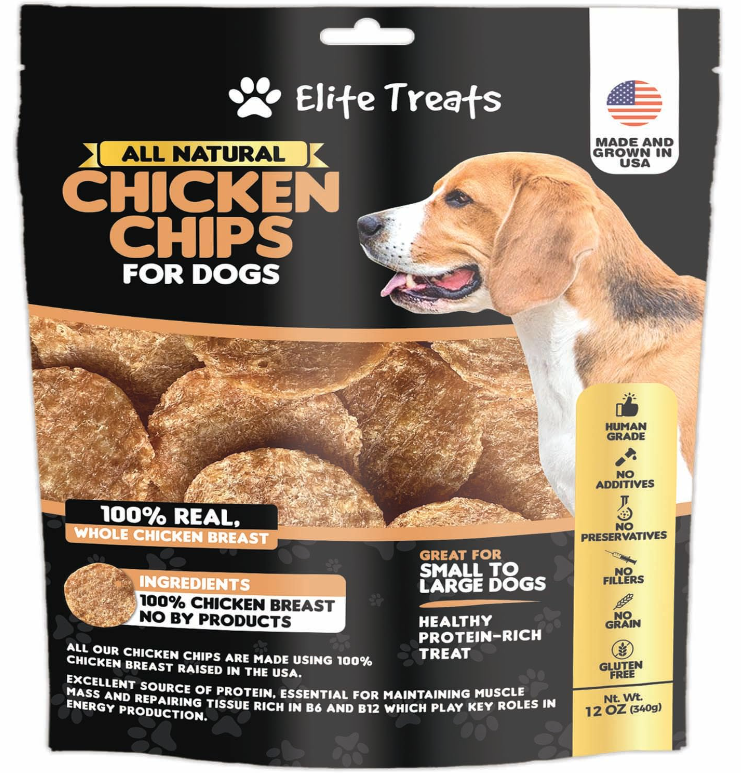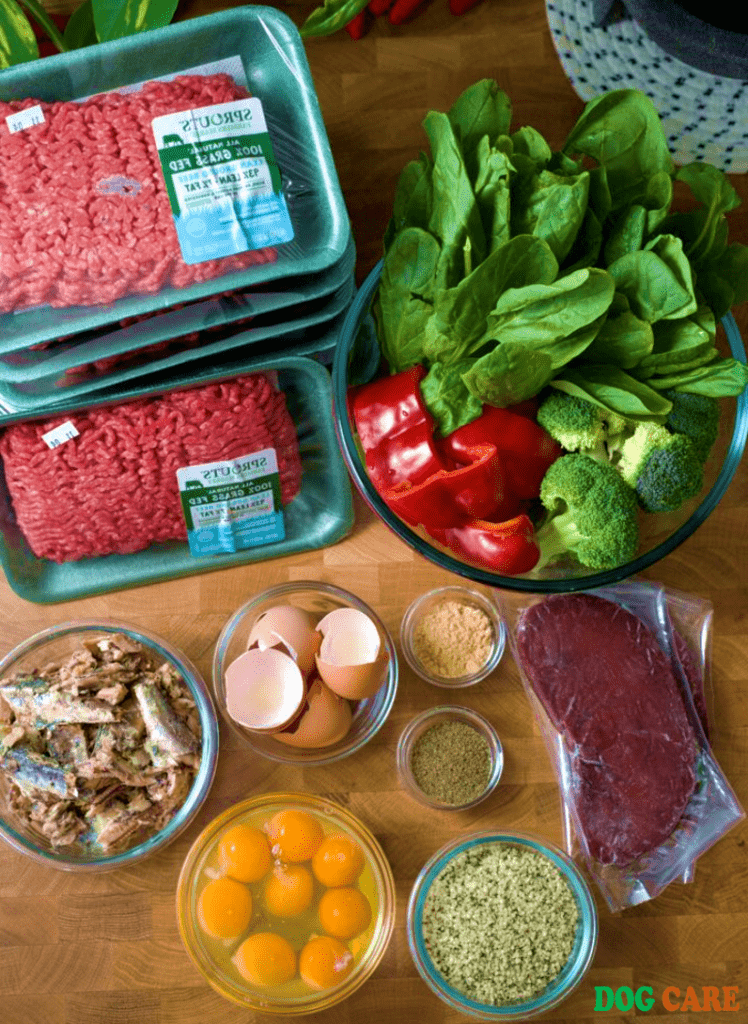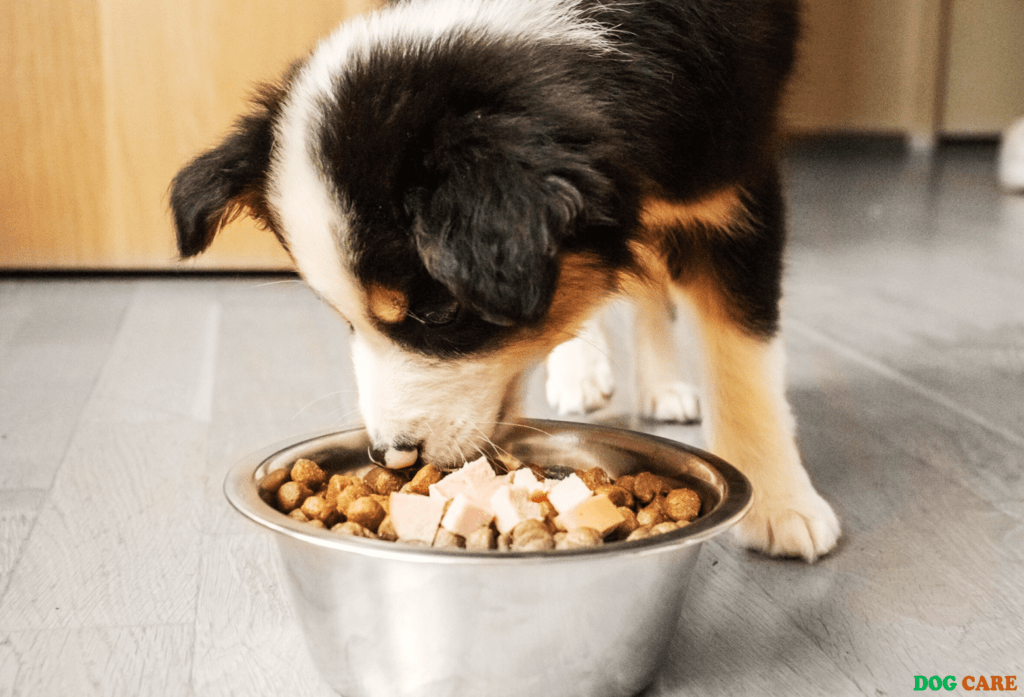Best Dog Food for Picky Eaters is Sweet Potato Dog Treats, formulated with high-quality ingredients to entice even the most selective dogs. It can be a challenge to find the right food for a picky eater, as they may turn their nose up at many options.
However, Sweet Potato Dog Treats brand offers a range of flavors and textures that are sure to appeal to even the fussiest of canines. Made with real meat, vegetables, and essential nutrients, this dog food provides a balanced diet for optimal health. The carefully selected ingredients are not only flavorful but also easy to digest, ensuring that your picky eater receives the nourishment they need.
Say goodbye to mealtime struggles and give your dog the best chance of enjoying their meals with Sweet Potato Dog Treats brand dog food.

Understanding Picky Eaters
Does your furry friend turn up their nose at mealtime? If your dog is a picky eater, finding the right food can be a challenging task. Picky eaters can be frustrating for pet owners, but by understanding what it means to be a picky eater and the factors that contribute to it, you can help your dog develop healthier eating habits.
What Does It Mean To Be A Picky Eater?
A picky eater refers to a dog that is selective about what they eat. They may show disinterest or reject certain types or brands of dog food, making it challenging to find a suitable option. Picky eaters can cause worry for pet owners, as they may not be obtaining the proper nutrition necessary for optimal health.
Factors That Contribute To Picky Eating In Dogs
Several factors can contribute to picky eating habits in dogs:
- Taste preferences: Just like humans, dogs have individual taste preferences. Some may prefer certain flavors, while others may dislike them.
- Texture and consistency: The texture and consistency of food can also influence a picky eater’s preference. Some dogs may prefer wet food over dry kibble or vice versa.
- Previous experiences: Negative past experiences, such as stomach upset or vomiting, can make dogs wary of certain foods, leading to picky eating habits.
- Health issues: Underlying health issues, dental problems, or gastrointestinal sensitivities can contribute to a dog becoming a picky eater.
- Feeding habits: Inconsistent feeding routines or being fed table scraps can make a dog more selective about their regular dog food.
- Environment: A dog’s surroundings and stress levels can impact their appetite and willingness to eat.
Understanding these factors can help you address your picky eater’s needs and find the best dog food to suit their preferences and nutritional requirements. By choosing high-quality dog food and introducing variety in flavors and textures, you can encourage a healthy eating routine for your beloved furry friend.
Choosing The Right Dog Food
Dogs can be notorious picky eaters. With so many dog food options available in the market, choosing the right one for your furry friend can be overwhelming. However, understanding your dog’s preferences and nutritional needs is essential in ensuring their overall health and well-being.
Identifying Your Dog’s Preferences And Needs
All dogs have unique tastes and preferences when it comes to food. Some may prefer wet food, while others may lean towards dry kibble. It’s important to pay attention to your dog’s reactions and behavior during meal times to identify their preferences.
Additionally, considering your dog’s age, size, and breed can also help determine their specific needs. Puppies require different nutrients compared to adult dogs, and toy breeds may have different feeding requirements than larger breeds.
Considering The Nutritional Requirements
The nutritional content of dog food plays a crucial role in their overall health. Opting for a balanced and complete diet is essential to ensure your picky eater receives all the necessary nutrients they need to thrive.
When choosing dog food, look for options that are labeled as “complete and balanced” by regulatory bodies. These foods are formulated to meet the nutritional standards set for dogs and can provide a balanced diet for your furry friend.
Exploring Different Flavors And Textures
Dogs, just like humans, can get bored with the same food every day. Introducing variety in terms of flavors and textures can help entice a picky eater. Experiment with different brands and flavors to see what your dog prefers.
Some dog food brands offer a wide range of flavors, going beyond the standard chicken and beef options. From fish to lamb and even exotic proteins like venison or bison, you can find a diverse selection to add variety to your dog’s meals.
Furthermore, exploring different textures can also make a difference. Some dogs may enjoy the crunchiness of kibble, while others may prefer the moistness of wet food. Mixing different textures can make mealtime more appealing for your picky eater.
Overall, choosing the right dog food for picky eaters requires a combination of understanding your dog’s preferences, considering their specific nutritional needs, and offering them variety in terms of flavors and textures. By taking these factors into account, you can optimize your dog’s diet and ensure they receive the nourishment they need to be happy and healthy.
Wet Vs. Dry Dog Food
When it comes to choosing the best dog food for picky eaters, one of the decisions you’ll need to make is whether to opt for wet or dry dog food. Both options have their own advantages and benefits, so it’s important to understand the differences and find the right balance that suits your furry friend’s needs.
Advantages Of Wet Dog Food
Wet dog food, also known as canned dog food, offers several advantages that make it a popular choice among pet owners. Some of the key advantages of wet dog food include:
- Higher moisture content: one of the main advantages of wet dog food is its high moisture content. This can be particularly beneficial for dogs that struggle to stay hydrated or have dental issues, as the soft texture makes it easier to eat and digest.
- Enhanced flavor and aroma: wet dog food is often considered more palatable and appetizing than dry kibble. The rich flavors and strong aroma can entice even the pickiest eaters to enjoy their meal.
- Easy to mix with medications: if your dog requires medication, wet dog food can serve as a convenient way to administer it. The soft texture allows you to easily conceal pills or powders, ensuring your dog gets the necessary medication without any fuss.
Benefits Of Dry Dog Food
Dry dog food, also known as kibble, also offers a range of benefits that may be suitable for your picky eater. Some of the key benefits of dry dog food include:
- Dental health: the crunchy texture of dry dog food helps promote good dental health by reducing plaque and tartar build-up. The mechanical action of chewing kibble can help keep your dog’s teeth clean and healthy.
- Convenience and storage: dry dog food is easy to store and has a longer shelf life compared to wet dog food. This makes it a convenient choice for pet owners who prefer to buy in bulk or have limited storage space.
- Portability: dry dog food is lightweight and easy to transport, making it an ideal choice for pet owners who frequently travel or have an on-the-go lifestyle.
Finding The Right Balance
Ultimately, finding the right balance between wet and dry dog food is essential for ensuring your picky eater gets the nutrition they need. Consulting with a veterinarian can help you understand your dog’s specific dietary requirements and determine the best combination of wet and dry food for their overall well-being.
It’s important to introduce any new food gradually, mixing it with the existing food to avoid any digestive upset. Additionally, always read the labels and choose high-quality dog food that meets the nutritional needs outlined by reputable pet food organizations.
Top Ingredients To Look For
When searching for the best dog food for picky eaters, be sure to look for top ingredients such as real meat, high-quality carbohydrates, and essential nutrients to entice your furry friend’s appetite and ensure their overall health and well-being.
When it comes to finding the best dog food for picky eaters, it’s important to focus on the ingredients. High-quality protein sources, natural and wholesome ingredients, and limited ingredients for sensitive stomachs are key factors to consider. Let’s delve into each of these categories to help you make an informed decision for your furry friend’s dietary needs.
High-quality Protein Sources
Picking a dog food that includes high-quality protein sources is crucial for the overall health and well-being of your picky eater. Dogs are carnivores by nature, and their bodies require protein to thrive. Look for dog foods that have real meat as the main ingredient, such as chicken, turkey, beef, or fish. These protein sources provide the necessary amino acids to promote muscle growth, repair tissues, and boost energy levels in your furry friend.
Natural And Wholesome Ingredients
Choosing a dog food that contains natural and wholesome ingredients is a responsible choice for your picky eater. Avoid dog foods that are filled with artificial preservatives, flavors, and colors, as these additives can potentially trigger digestive issues and allergies in your four-legged companion. Instead, opt for dog foods that feature whole grains, fruits, and vegetables. These ingredients provide essential vitamins, minerals, and fiber to support your dog’s immune system and promote optimal digestion.
Limited Ingredients For Sensitive Stomachs
If your picky eater has a sensitive stomach or food allergies, finding a dog food with limited ingredients can make a world of difference. Limited ingredient dog foods are formulated to minimize the risk of triggering adverse reactions in dogs with food sensitivities or allergies. Typically, these recipes contain a single source of protein and carbohydrates, making it easier to identify and avoid problematic ingredients. Additionally, they often exclude common allergens such as wheat, corn, soy, and dairy. By eliminating potential triggers, you can help your furry friend enjoy their meals without experiencing digestive discomfort. To summarize, the best dog food for picky eaters should include high-quality protein sources, natural and wholesome ingredients, and limited ingredients for sensitive stomachs. By paying attention to these key factors, you can ensure that your picky eater receives the nourishment they need to stay healthy and happy.
Tips To Encourage Eating
Dealing with a picky eater can be frustrating, especially when it comes to finding the best dog food that they will actually eat. However, there are several tips you can try to encourage your picky eater to enjoy mealtime. Establishing a regular feeding schedule, implementing a mealtime routine, and using food puzzles and interactive toys are effective strategies to stimulate your dog’s appetite. Let’s delve into each of these tips in detail:
Establish A Regular Feeding Schedule
A regular feeding schedule plays a crucial role in encouraging your picky eater to consume their meals. Dogs thrive on routine, and having set mealtimes helps them anticipate when they will be fed. By establishing a consistent feeding schedule, you create a sense of stability and structure for your dog, making them more likely to eat at specific times. Additionally, sticking to a schedule can also prevent overeating or undereating, promoting a healthy appetite. Consider the following table for a sample regular feeding schedule:
| Time | Meal |
|---|---|
| 8:00 AM | Breakfast |
| 1:00 PM | Midday Snack |
| 6:00 PM | Dinner |
Implement A Mealtime Routine
In addition to a regular feeding schedule, implementing a mealtime routine can make mealtime a more enjoyable and enticing experience for your picky eater. Having a routine sets expectations and creates a positive association with feeding time. Consider implementing the following mealtime routine:
- Prepare your dog’s meal in the same designated area every time.
- Use a specific bowl or plate for feeding to establish consistency.
- Place the bowl in the same location each meal, creating familiarity.
- Minimize distractions and provide a calm environment during mealtime.
- Offer praise and encouragement while your dog is eating, reinforcing positive behavior.
Use Food Puzzles And Interactive Toys
Food puzzles and interactive toys can serve as engaging tools to stimulate your picky eater’s appetite. These toys are designed to make mealtime more challenging and enjoyable, as they require your dog to work for their food. The interactive nature of these toys piques your dog’s interest and encourages them to eat. Consider the following food puzzle options:
- Kong toys: Fill a Kong with your dog’s favorite food and let them work to retrieve it.
- Treat dispensing toys: These toys release small amounts of food as your dog plays with them.
- Puzzle feeders: These toys have hidden compartments that your dog must discover and solve to access their meal.
By incorporating food puzzles and interactive toys into your dog’s feeding routine, you can enhance their mealtime experience and make it more enticing for them to eat.
Remember, every dog is different, and what works for one may not work for another. Consistency and patience are key when implementing these tips. With time and experimentation, you will find the best approaches to encourage your picky eater to enjoy their meals.
Homemade And Specialty Diets
For picky eaters, finding the right dog food can be a challenge. That’s why exploring homemade and specialty diets could be the solution you are looking for. Crafting homemade dog food recipes and exploring specialty diets can help entice even the most stubborn pups to eat. By consulting with a veterinarian, you can ensure that these diets meet the nutritional needs of your furry friend.
Crafting Homemade Dog Food Recipes
Crafting homemade dog food recipes could provide a delicious and nutritious alternative for picky eaters. By preparing meals in your own kitchen, you have complete control over the ingredients. It allows you to cater to your dog’s specific preferences and dietary needs. When crafting homemade dog food, ensure you include a balance of protein, carbohydrates, and healthy fats. Here are some key pointers to keep in mind:
- Use high-quality protein sources such as boiled chicken, lean beef, or turkey.
- Include whole grains like brown rice or quinoa for healthy carbohydrates.
- Add vegetables like carrots, peas, or sweet potatoes for essential vitamins and minerals.
- For an added nutrient boost, include superfoods like blueberries or pumpkin.
- Remember to avoid ingredients harmful to dogs, such as chocolate, onions, or garlic.
Exploring Specialty Diets For Picky Eaters
When traditional homemade recipes don’t seem to do the trick, exploring specialty diets can provide an alternative. These diets are carefully formulated to meet the specific needs of dogs with food sensitivities or picky preferences. Here are some popular specialty diets to consider:
- Raw Food Diet: This diet consists of feeding dogs raw meat, bones, and vegetables. It is believed to mimic their ancestral diet and can promote healthier skin, coat, and digestion.
- Limited Ingredient Diet: These diets contain a limited number of ingredients, making it easier to identify and eliminate potential allergens or food intolerances. They often feature novel protein sources like venison or lamb.
- Grain-Free Diet: Grain-free diets are formulated without grains to accommodate dogs with grain sensitivities. Instead, they include alternative carbohydrate sources such as sweet potatoes or lentils.
- Hypoallergenic Diet: Hypoallergenic diets are specifically designed for dogs with severe food allergies or sensitivities. These diets eliminate common allergens and incorporate easily digestible protein sources like hydrolyzed chicken or fish.
Consulting With A Veterinarian
Before embarking on any homemade or specialty diet, it’s important to consult with a veterinarian. They can assess your dog’s nutritional needs, recommend specific recipes or specialty diets, and ensure that your efforts are meeting their requirements. A veterinarian’s expertise can help you tailor the diet to address your picky eater’s specific dietary needs while ensuring they receive all the necessary nutrients for optimal health.
Conclusion
Finding the best dog food for picky eaters can be a challenge, but it’s crucial for their health and well-being. By considering their preferences and nutritional needs, you can ensure that your furry friend enjoys their meals while getting the necessary nutrients.
Experimenting with different flavors, textures, and brands is key to finding what works best for your dog. Remember to consult with your veterinarian for professional advice tailored to your pet’s specific requirements. With patience and persistence, you can support your picky eater in developing a healthy and balanced diet they’ll love.



